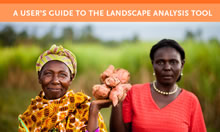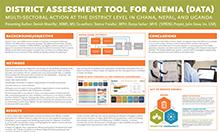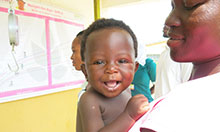Background
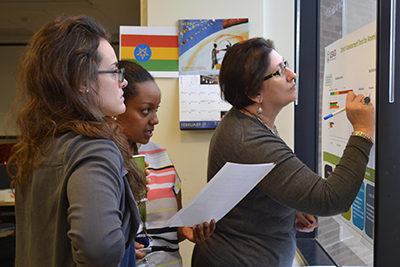
The Strengthening Partnerships, Results, and Innovations in Nutrition Globally (SPRING) project developed the Landscape Analysis (LA) Guidance Tool and District Assessment Tool for Anemia (DATA) to assist countries in strengthening anemia programming at the national and district levels. The LA guidance provides information for conducting a context assessment using primary and secondary data sources to gather country-specific information on anemia prevalence, contributing factors, and current policies and interventions. The guidance helps stakeholders develop a context-specific understanding of anemia and identify priority areas to guide anemia efforts at the national level. SPRING developed the LA guidance based on experiences conducting landscape analyses in Ghana, Sierra Leone, and Uganda. We designed DATA to assist district-level program managers and planners in assessing the main factors causing anemia in their district, identify enablers and barriers to addressing anemia, and prioritize interventions. The DATA toolkit includes guidance for facilitating a workshop with multi-sectoral district managers during which participants enter data into a Microsoft Excel-based tool that creates easy-to-read dashboards. These visual snapshots help stakeholders better understand the anemia situation in their local context. SPRING piloted DATA in Nepal, Ghana, and Uganda to generate district-specific assessments to inform anemia programming.
To share these two resources for addressing anemia with U. S. Agency for International Development (USAID) bureaus and implementing partners, SPRING held an interactive, hands-on training in Washington, D.C. to consolidate program learning from the implementation of the tools in countries. The training gave participants a comprehensive understanding of the tools and demonstrated how countries can use them to plan anemia interventions at both national and district levels. The dissemination to a broader audience was planned with the goal of ensuring the dissemination and use of these tools in many countries.
Workshop Structure & Details
The two days really broadened my view of anemia. I always knew it was an issue that required multisectoral strategy but I didn’t fully understand the degree. I think going through exercises like this is really beneficial, especially for those who don’t always work directly with anemia.
-workshop participant
The workshop spanned two days, with the first day focused on LA and the second day dedicated to DATA. The morning sessions introduced the tools, including the rationale for their development and countries’ experiences using them. The afternoons involved participatory activities that required participants to assume various roles and complete intricate case studies using the tools. Interactive posters added an opportunity for participants to plug in the information from the case studies and visualize the synthesis of the data. We showed the participants an award-winning video that SPRING has produced on DATA. To enhance the experiential learning, the meeting room included a gallery of photographs and quotes from country partners where SPRING implemented the tools, allowing participants to delve deeper into users’ perspectives. We reserved the last session of each day for participants to share the findings from the case studies, and discuss the wider implications of these tools on their work. We also included a number of shorter, warm-up and energizer activities interspersed through the day to keep participants engaged and motivated. To share SPRING experiences with the participants, we introduced anemia and the tools through four different presentations:
- Anemia – An Overview: The first presentation of the workshop gave the participants a technical foundation for the workshop with information on anemia, explaining the multitude of contributing factors and consequences of anemia, and emphasized the need for a context-specific and multi-sectoral approach to reduce anemia.
- Guidance on Conducting Landscape Analyses for Anemia: This presentation in the morning of the first day introduced the LA guidance, which provides national-level stakeholders with step-by-step information on conducting a landscape analysis for anemia using a systematic process for gathering information on the context-specific causes, and anemia related policies and programs.
- Understanding Anemia in Sierra Leone: SPRING presented its experience supporting the Ministry of Health and Sanitation in Sierra Leone conduct a LA, which found that causes such as inflammation and malaria—not iron deficiency—acted as major contributors to anemia. The findings from the Landscape Analysis catalyzed national efforts to address anemia, including the establishment of the National Anemia Working Group and development of a national strategy for the prevention and control of anemia.
- District Assessment Tool for Anemia Overview: The only presentation on the second day introduced DATA, an Excel-based tool developed for use during a two-day facilitated workshop with district-level stakeholders.
Seventeen participants attended the workshop. These participants represented a range of sectors, departments, and agencies, including USAID Washington, USAID/Jordan, PATH, Palladium, Save the Children, FHI360/FANTA, and USAID/PMI. The full, two-day schedule is in Annex 1. The full list of attendees is included in Annex 2. The case studies for LA are in Annex 3, and for DATA in Annex 4.
Discussion
We gave participants an opportunity to ask questions and engage with the material during each session, which resulted in interesting discussions on numerous topics, including—
- the reasons for the lack of progress in reducing anemia rates worldwide; relating this to the multifactorial nature of anemia and the growing scientific evidence about anemia and related risk factors over the last couple decades
- specific roles of genetics and inflammation in causing anemia and what can be done programmatically to address these issues
- issues related to the validity and reliability of hemoglobin measurement (a topic of emerging importance), and how to be aware of differences in anemia found across surveys that are conducted in the same country (i.e. Demographic Health Survey, Micronutrient Survey, etc.)
- ways to address discordance in anemia-related information from differing sources, or altogether lack of anemia-related information
- how DATA is useful to understand the context-specific issues in each district (which may not mirror the national-level picture)
- approaches to customizing DATA, a global tool, to district contexts in different countries

- approaches to monitoring district-level progress related to anemia after DATA implementation
- relating DATA to general multisectoral action for nutrition at the district-level
- engaging the necessary champions/leaders, existing coordination bodies, and stakeholders at the district-level to address anemia using DATA, using examples from SPRING’s implementation in Ghana, Nepal, and Uganda
- discordance between policies to programs for the various anemia-related interventions; including examples of where policies are in place but no program in place, and where there is no policy, but districts have started implementing programs (e.g. delayed cord clamping or micronutrient powders).
Future Use of SPRING’s Anemia Tools
The workshop’s final activity asked participants to write down responses on notecards to two questions:
- List 1-3 ideas for using LA & DATA in your work.
- Do you view anemia differently now? If yes, how so?
I LOVED the anemia workshop and I loved that team, I really hope that we can do an anemia assessment using the tool in Nigeria. I was really impressed with the delivery team, the quality of the tool, the trainers—it was really impressive!
-workshop participant
In written responses to the first question on using the LA and DATA tools in their respective fields, participants responded along similar lines. Most participants agreed that they could think of ways to use the tool within their own sectors. One participant suggested that it could be used in countries where they are trying to improve general nutrition during pregnancy, and another said that it could be added to the malaria in pregnancy (MIP) district assessment. A third participant suggested showing the LA and DATA tools to her organization’s monitoring and evaluation team and “discussing integration possibilities”. Finally, one participant mentioned that the tools had general applicability to other conditions and diseases.
Another theme that stood out in participant responses was the tools’ usefulness in bringing together multiple sectors and creating joint plans. One participant said that the anemia assessment could be incorporated before and during work planning, another hoped that it could mobilize the districts and be used for multi-sectoral coordination, and a third said that the user-friendly nature of the DATA tool would work well in a decentralized setting. One more participant said that the tools could “help in building trusted and engaged relationships with in-country stakeholders”.
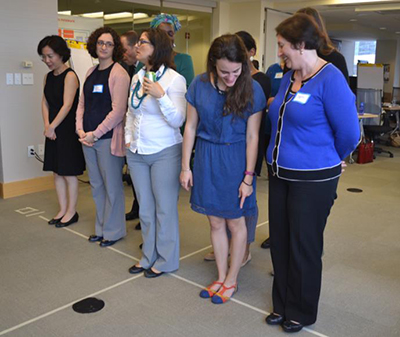
Participants had similar responses to the questions “do you view anemia differently now?” and “how so?” Participant responses to the first question were a uniform affirmation, saying that their knowledge of anemia had expanded because of the workshop. When asked for details, participants stated that they now understand anemia to be associated with infection, not just iron deficiency. They pointed out that different countries, regions, and districts all have varying experiences with what contributes to anemia prevalence, and so reducing anemia will require specific targeted programs, which in turn requires multi-sectoral coordination.
As an indicator of impact of the workshop, SPRING also received two expressions of interest in the immediate use of the tool from two countries represented at the workshop - Jordan and Nigeria.
Workshop Evaluation
Participants were very satisfied with the structure of the workshop, with 88% reporting that there were “just the right amount of presentations” (Figure 1) and 100% that there was the “right amount of group work”.
Figure 1. How satisfied were you with the number of presentations delivered?
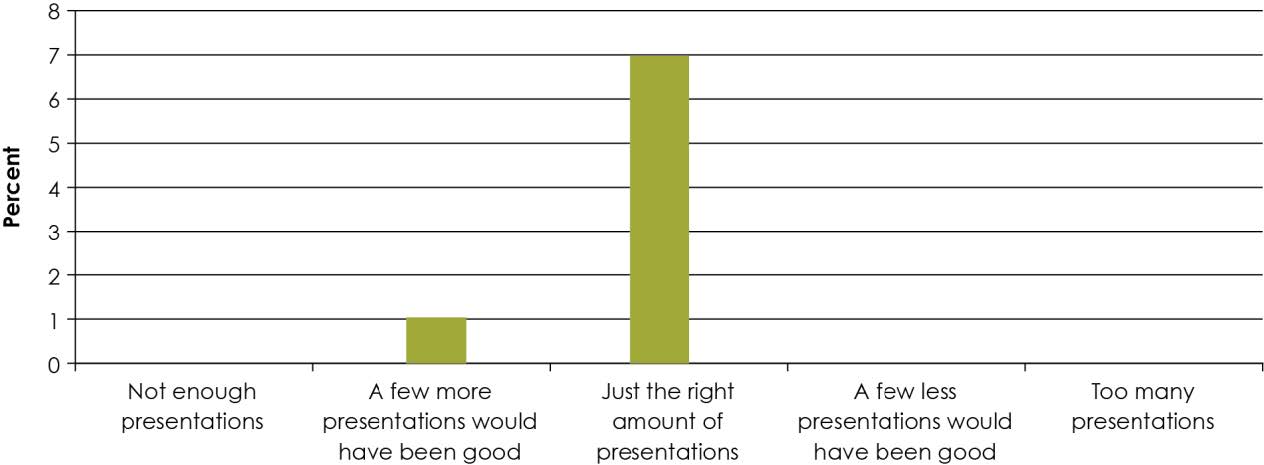
75% of participants felt they were able to ask all questions and make all comments during the workshop (Figure 2), and 63% felt the content/activities surpassed their expectations based on the information they received in advance. The remaining participants reported that it almost and somewhat matched expectations (Figure 3).
Figure 2. Were you able to ask all your questions and have your comments heard?
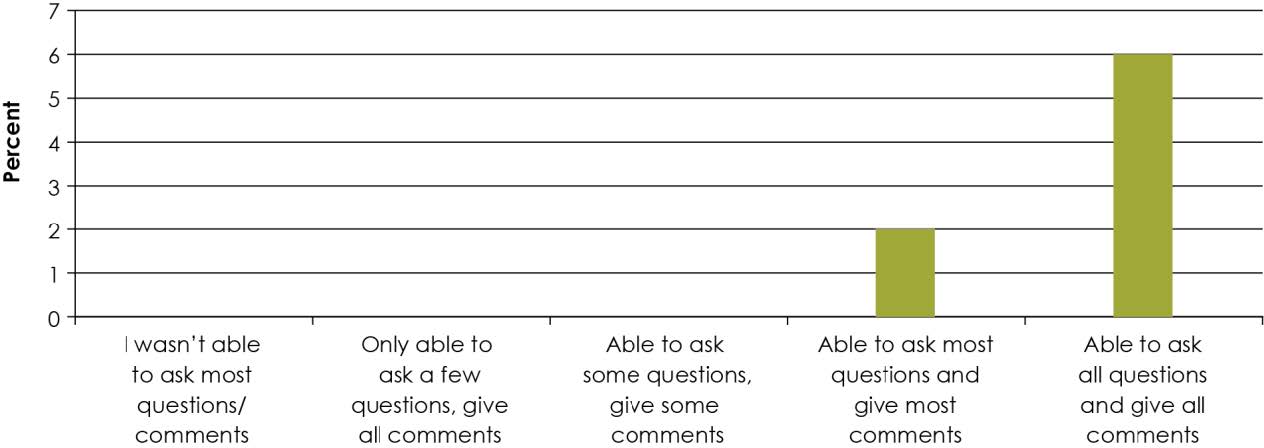
Figure 3. Did the actual content and activities meet your expectations based on the information you received in advance?

All participants felt they had enough time to meet and talk with other participants during the workshop. This response was most likely influenced by the inclusion of energizer activities and group work that allowed members of the group to get to know one another by working together.
The majority of participants reported that most of the content from the workshop will be quite useful, and two participants felt that all the content will be useful in their work setting (Figure 4).
Figure 4. How useful did you find the content that was presented in the orientation?
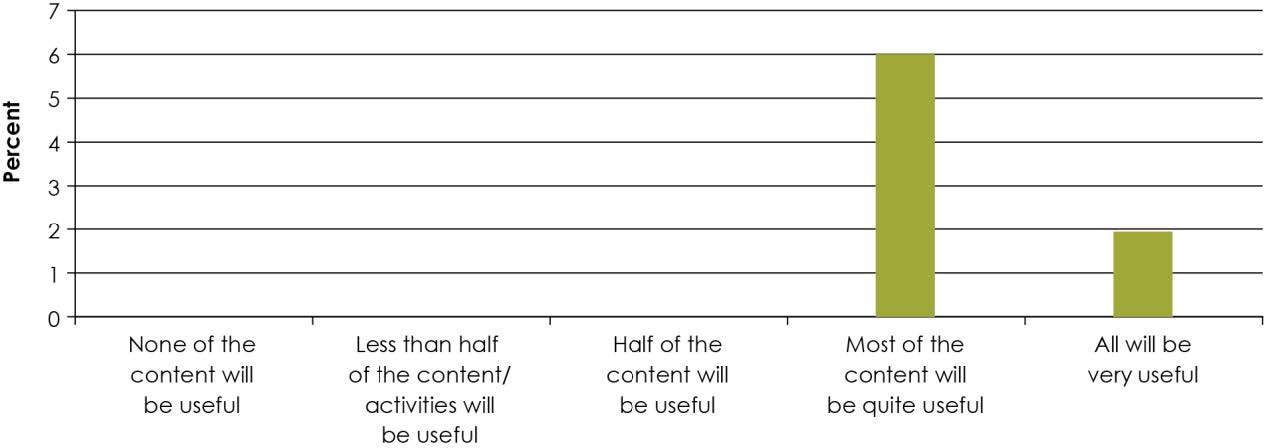
This training was incredibly practical, well-paced, user friendly, and combined a great mix of science, evidence, data, along with the “art” of building local capacity, identity policy champions to take-up specific anemia action plans. It also addressed the conundrum of “work-arounds” for filling in gaps in data, when the common sources (DHS, micronutrient supplementation reports) do not reveal the data that we need at the district level.
-workshop participant
Participants rated the online communications, food and services, group session instructions, and the overall workshop as “very good” or “exceptional”. When participants were asked how they would like to engage in further discussions about the usage of the DATA and LA tools, responses varied. Several noted that they preferred online forums, while others picked email updates, webinars, or individual communications.
Table 1. How would you like to engage in continued discussions about usage of the DATA and LA tools? (Select all that apply)
| Forum | Number of participants |
|---|---|
| Online Forums | 3 |
| Email updates | 4 |
| Webinars | 4 |
| Individual communication with USAID staff | 3 |
